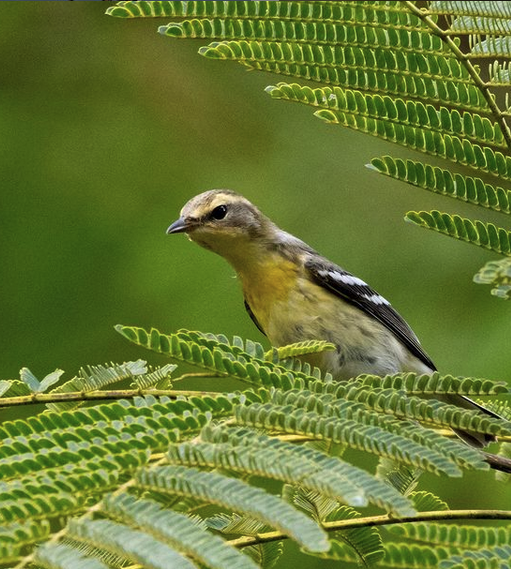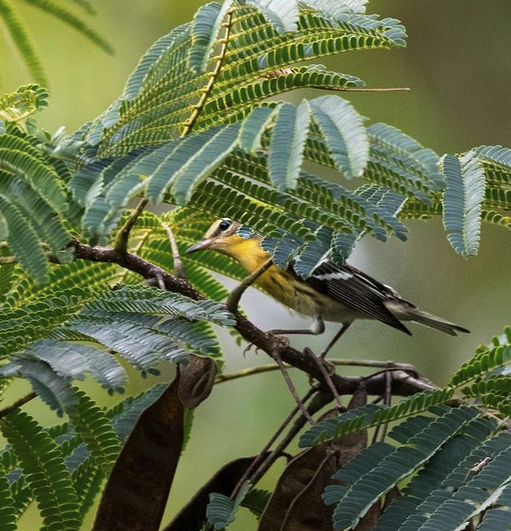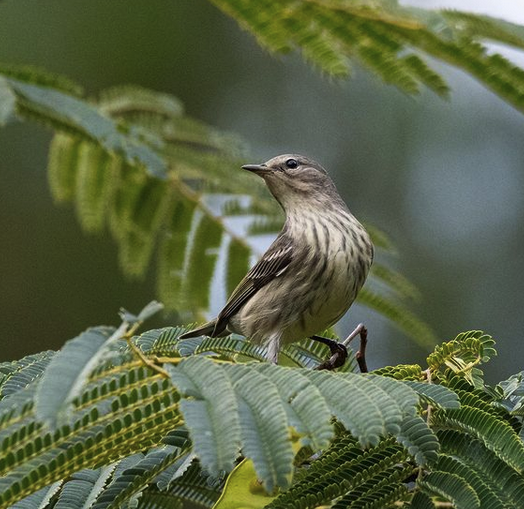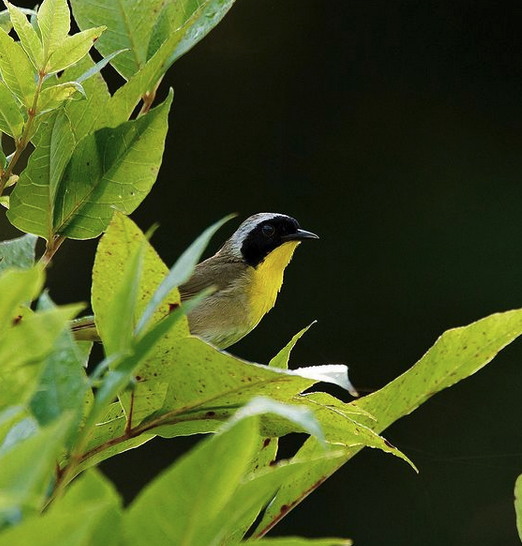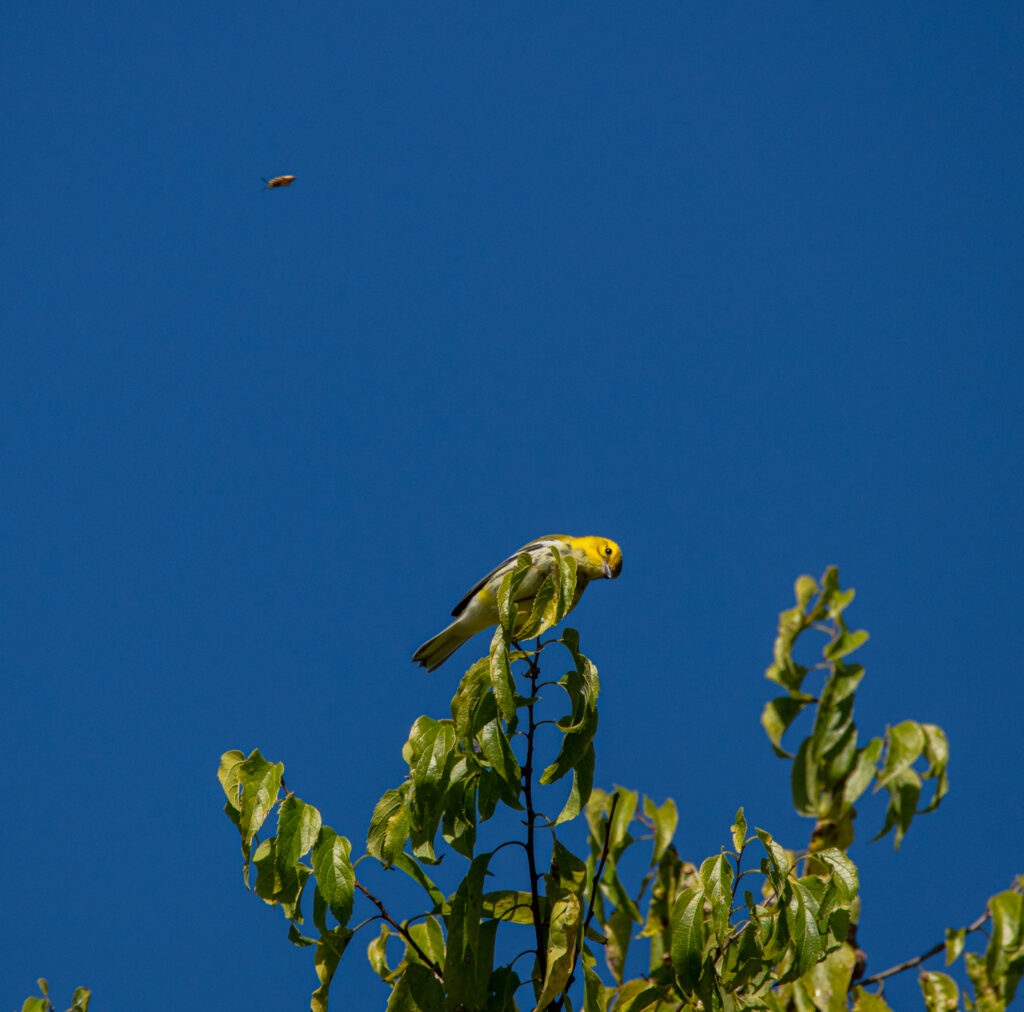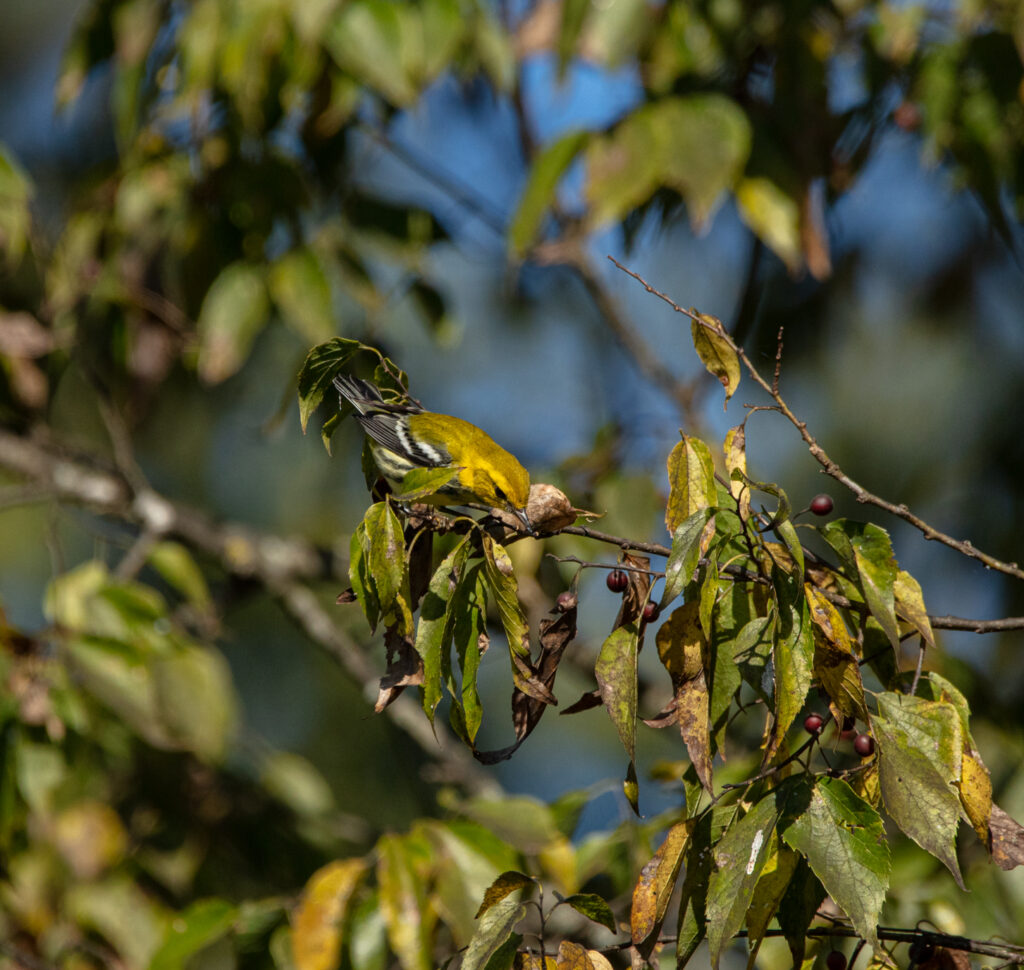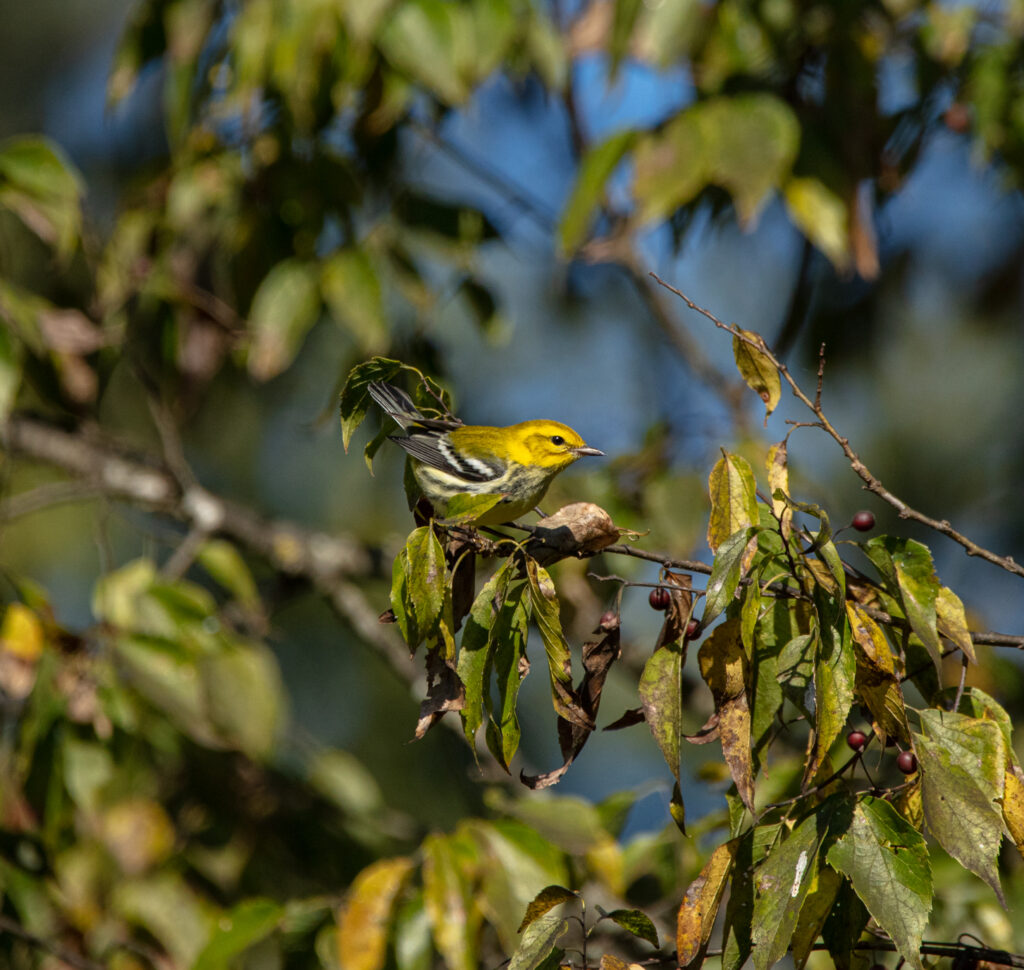With spring migration right around the corner, some early arrivals are slowing filtering into the Tarheel state such as the Northern Parula.
I was pleased to photograph this one at Bynum Bridge in Pittsboro NC this past weekend.
It was a real joy to lay eyes on this beautiful species of warbler as he searched for a six legged snack in the trees.
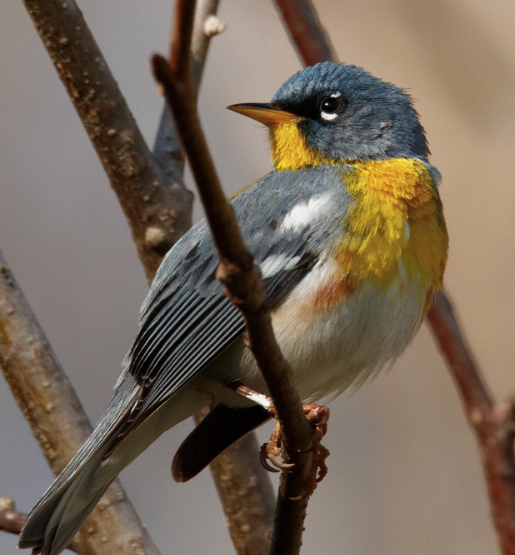
Measuring just 11.4 cm, Northern Parulas are one of North America’s smallest species of Warbler and due to their energetic habits they can be tough to see or photograph. Happily though, they do respond well to pishing and will sometimes swoop in close to you to get a better look at who’s making all that swoooshing noise.
Parulas breed across the eastern United States and north up into eastern Canada. They favor habitats in swamps and wooded wetlands where Spanish Moss is present as this is their preferred nesting material.
Though they are found throughout NC, I’ve had the best luck in finding them in our southeastern coastal counties and especially around the Wilmington area.
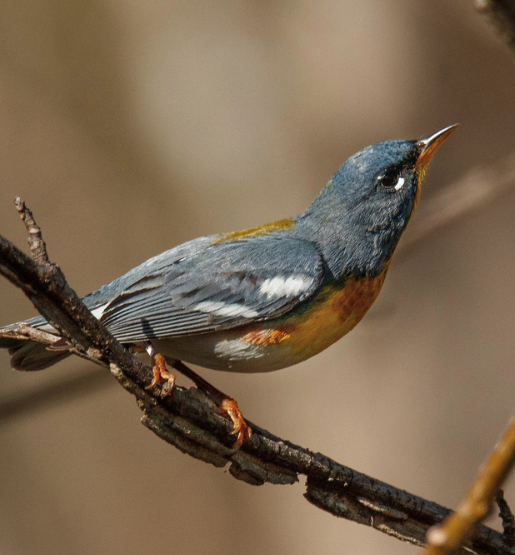



Though they can be tough to actually see in the dense leafy canopy’s of the treetops you can certainly find them by listening for their distinctive buzzy trill call from above.
The Northern Parulas will stick around NC through early October so we’ve got plenty of time to enjoy them this year before they head south for the winter.
Photos by @sally_siko of @birdwatching_nc on my beloved full frame 50MP beast, the mighty @canonusa #5Ds

